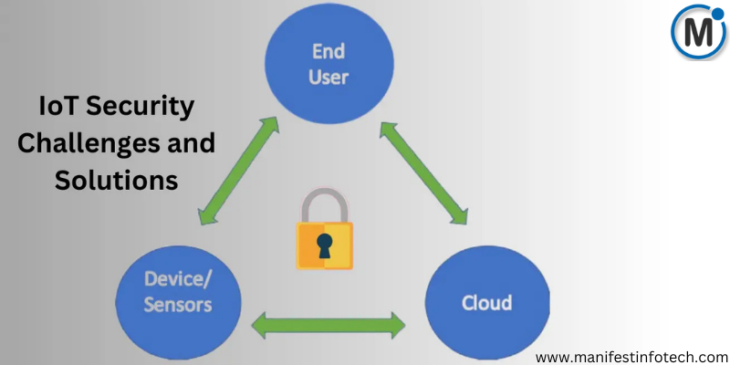
The Internet of Things (IoT) has revolutionized the way we interact with technology, connecting billions of devices worldwide. From smart homes and wearable gadgets to industrial automation and healthcare, IoT has brought convenience and efficiency to various sectors. However, as IoT adoption grows, so do the security challenges associated with it.
1. Lack of Standardized Security Protocols
One of the primary concerns with IoT security is the absence of universally accepted security standards. Different manufacturers use their own protocols, leading to inconsistencies in security measures. This makes it difficult to establish uniform protection across devices, increasing the risk of vulnerabilities.
2. Weak Authentication and Authorization
Many IoT devices have weak or default passwords that are easy to guess, making them prime targets for cybercriminals. Additionally, a lack of robust authentication mechanisms allows unauthorized access, leading to data breaches and unauthorized control of devices.
3. Insufficient Encryption
Data transmission between IoT devices often lacks proper encryption, making it vulnerable to interception by hackers. If sensitive information, such as personal data or financial transactions, is not adequately encrypted, it can be exploited for malicious purposes.
4. Poor Device Management and Updates
IoT devices often lack regular security updates and patches, leaving them exposed to newly discovered vulnerabilities. Many devices are deployed with outdated firmware, making them an easy target for attackers who exploit known security flaws.
5. Large Attack Surface
As IoT devices are connected to networks, they significantly expand the attack surface. Cybercriminals can exploit a single vulnerable device to gain access to an entire network, leading to data leaks, ransomware attacks, and even physical damage in industrial settings.
6. Privacy Concerns
IoT devices collect vast amounts of data, including personal and behavioral information. If this data is not adequately protected, it can be misused by hackers, corporations, or even governments, raising serious privacy concerns for users.
7. Botnet and DDoS Attacks
Cybercriminals often exploit IoT devices to create botnets—networks of compromised devices used to launch Distributed Denial of Service (DDoS) attacks. These attacks can overwhelm servers and disrupt essential services, causing financial and reputational damage to businesses.
8. Physical Security Risks
Unlike traditional IT systems, IoT devices are often deployed in physically accessible locations, making them susceptible to tampering. Attackers can manipulate devices to gain unauthorized access or extract sensitive data.
Mitigating IoT Security Challenges
To enhance IoT security, manufacturers and users must adopt a proactive approach:
Strong Authentication: Implement multi-factor authentication and avoid default credentials.
End-to-End Encryption: Ensure data is encrypted during transmission and storage.
Regular Updates: Keep firmware and software updated to patch vulnerabilities.
Network Segmentation: Isolate IoT devices from critical networks to prevent lateral movement of attackers.
Security Standards Compliance: Follow industry best practices and security frameworks to ensure device security.
Final Thoughts
The rapid expansion of IoT brings numerous benefits but also significant security risks. Without proper security measures, IoT devices can become entry points for cyber threats. Addressing these challenges requires a collective effort from manufacturers, businesses, and users to build a safer, more resilient IoT ecosystem.
If you are looking for any services related to Website Development, App Development, Digital Marketing and SEO, just email us at nchouksey@manifestinfotech.com or Skype id: live:76bad32bff24d30d
𝐅𝐨𝐥𝐥𝐨𝐰 𝐔𝐬:
𝐋𝐢𝐧𝐤𝐞𝐝𝐢𝐧: linkedin.com/company/manifestinfotech
𝐅𝐚𝐜𝐞𝐛𝐨𝐨𝐤: facebook.com/manifestinfotech/
𝐈𝐧𝐬𝐭𝐚𝐠𝐫𝐚𝐦: instagram.com/manifestinfotech/
𝐓𝐰𝐢𝐭𝐭𝐞𝐫: twitter.com/Manifest_info
#IoTSecurity #CyberSecurity #SmartDevices #DataPrivacy #TechTrends #IoTChallenges #DDoS #Hacking #SecureIoT